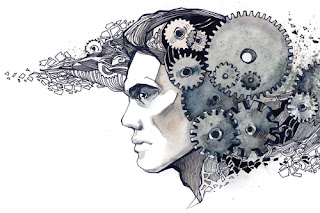There is a Crack in Everything...
It’s been a
very peculiar half of this semester: the tentacles of the strike have infiltrated
even into the seminars that we have managed to attend, and every session has
been viewed through the frame of this action.
However, as
we have discussed this week, and previously, in many respects the strike has
helped us to crystallise much of our reading and conversation, given that we
have been discussing aspects such as institutional bias, the role of the
cultural archive, and the responsibility of education. As I head towards the
final days of this semester, I feel as though this crisis has spurred me into a
realm of critical thinking that I wouldn’t have had access to otherwise:
research becomes practise, becomes praxis.
Image Source: pmlive.com
In a reflective
seminar, we ranged through topics of conversation to attempt to summarise the
unsettled state of our sessions over the past month:
Archive
How do we
understand the unquantifiability of “Archive”, as a term and a concept? What is the Archive, and what does it do?
What is history, then? It is the stories we tell of ourselves: history is
constantly being recreated as the present desires different stories.
Image Source: dreamstime.com
Professionalism
Referring
back to a previous weeks reading, we touched on the concept of “Professionalism”
as a standard that must be achieved within a society; a classification which
comprises an agreed set of terms, that have to be met in order to reach a
supposed ‘normativity’.
There is a parable called the Blind Men and the Elephant. Referring to Edward
Said’s concept of ‘amateurism’, we must cultivate curiosity; accepting that,
while one man may become an expert on the elephant’s tail and know more about
the tail of an elephant than another man, we are always going to need one person
who asks what is beyond the tail –
who develops a questioning acceptance that they may be an expert on the elephant’s
tail, and an amateur on the elephant’s tusk, yet still asks and searches, and
learns.
Image Source: montessorimessage.net
Art and Experience
We are living
through a curious period, possibly best articulated by the term Affective
Dissonance. For example, in the shadow of the #MeToo movement, can we still
appreciate the oeuvre of actors or film directors who turn out to have been
sexual predators? How do we cognise or articulate this dichotomy?
What is the realm of autonomy of a work of art? Theatre has the capacity to
influence the audience, but what about the idea of paratheatrical space? Does art
have to be political? If art is autonomous away from politics and economy then surely
that is a political stance within, and of, itself? Art (and I include theatre
in this terminology) lives in the realm of a co-existing temporality.
With the increasing monetisation of experience (which can be seen even in the quotidian,
with things such as ‘Red Letter Days’), and the ways in which performance and
art can offer an interruption, a disruption, which asks us to (re)consider, or
can collide with the quotidian in ways which problematise the interruption itself.
Jerzy Grotowski: the man who coined the term 'Paratheatre'
Image Source: rhinegold.co.uk
Image Source: rhinegold.co.uk
Strike
Finally, we
reflected on the strike action, and our discussions of previous weeks,
including the external validation of education, and its end goal being the
certificate that proves you’ve dotted the right “I’s” and crossed the corrected
“T’s”. Obviously the affects of the strike have dictated the realm of crisis
under which we have been operating throughout this semester.
Within society and culture, we are living at a “teetering” moment: there is
something shifting, exposing sensitivity and pain, and we are becoming
increasingly vulnerable. But, in this state of excitement, we are asking the
questions that might force change: we are finding our way through a new
language which might help us articulate these questions, and we are apprehensive
(in both meanings of the word) of the cracks. But there is a crack in
everything: that’s how the light gets in…







Comments
Post a Comment